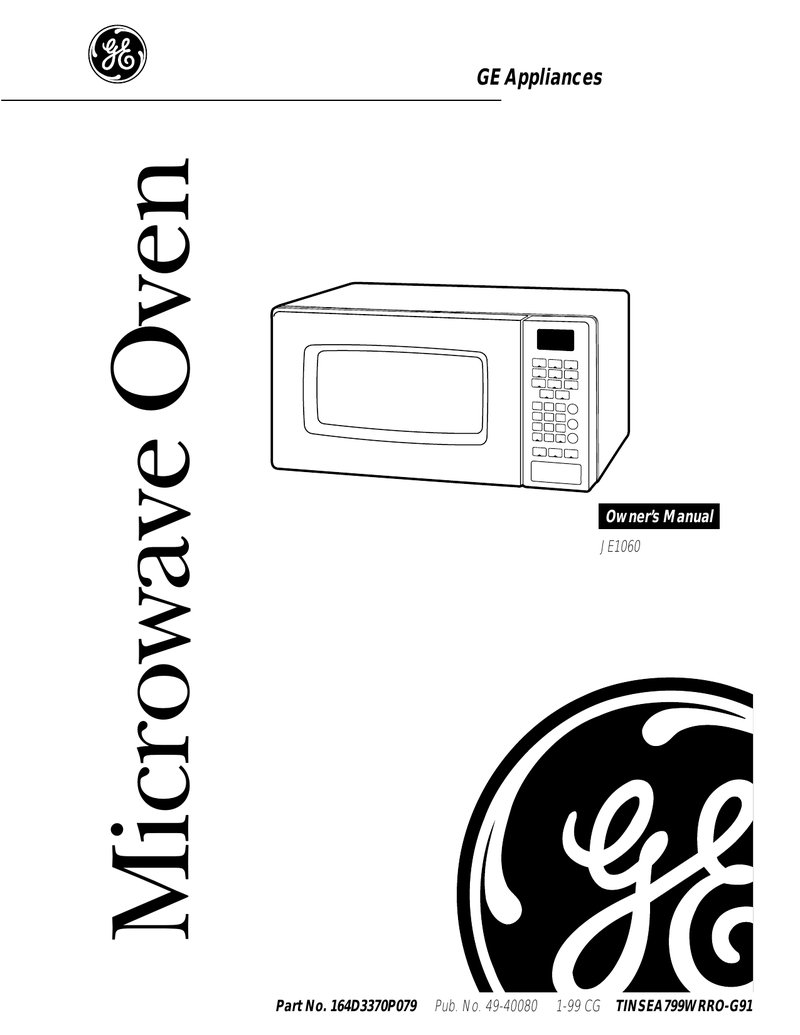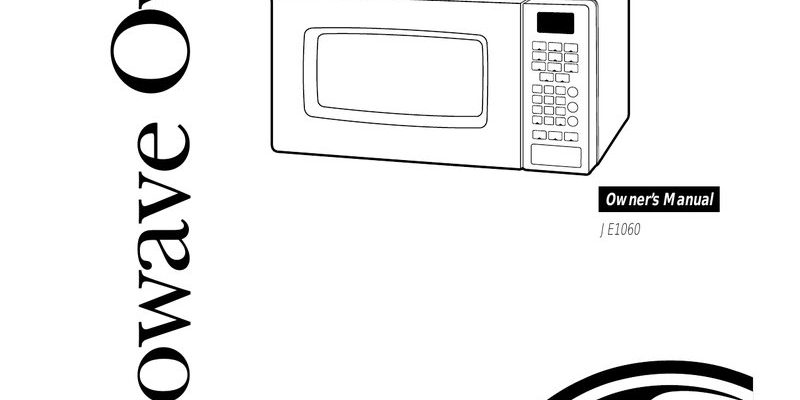
You might be wondering, “Okay, but what exactly *does* the warranty cover?” It’s a fair question because warranties can sometimes feel like a mystery wrapped in legal jargon. Let me explain how the GE microwave warranty works, what parts and repairs are included, and what you should watch out for. By the end, you’ll know exactly how protected your microwave is and when to call in the pros.
Understanding the Scope of the GE Microwaves Warranty
Simply put, the GE microwave warranty covers defects in materials and workmanship. That means if something inside your microwave—like the magnetron, control panel, or door latch—breaks because of a manufacturer’s fault, GE will step in to fix it. This warranty usually lasts for *one year* starting from the date you bought your microwave.
Here’s the thing: the warranty doesn’t cover everything, though. Wear and tear from everyday use, accidental damage (like dropping the microwave or spilling something inside it), or issues caused by improper installation won’t be covered. Also, if you try to repair or mess with the microwave yourself or through an unauthorized technician, that could void your warranty entirely.
To give you a better idea, the warranty focuses on functional breakdowns, not cosmetic scratches or fading paint. So if your microwave’s door won’t close properly or it stops heating food, that’s exactly the kind of problem GE wants to help fix.
What Specific Parts Does the GE Microwave Warranty Cover?
GE’s warranty typically covers all the major components that keep your microwave working right. This includes:
- Magnetron: The heart of your microwave that generates the microwaves to heat your food.
- Control panel and buttons: If the digital code or buttons stop responding, that’s covered.
- Door assembly: Includes latch and hinges—essential for safety and proper operation.
- Turntable motor: Keeps your food rotating evenly as it cooks.
Each of these parts is vital, so if any fail due to a manufacturer defect, GE will repair or replace them at no cost during the warranty period. It’s important to keep your purchase receipt—it acts like the receipt for your “kitchen safety net.”
What Doesn’t the GE Microwaves Warranty Cover?
Here’s where things get a little tricky, so it’s good to be clear. The warranty doesn’t cover:
- Damage caused by accidents, misuse, or abuse. For example, dropping the microwave or heating inappropriate items.
- Normal wear and tear, like faded buttons or worn-out turntables from regular use over time.
- Damage due to improper installation, such as placing the microwave in a non-ventilated cabinet or using the wrong power source.
- Repairs made by unauthorized technicians or self-repair attempts—these can void the warranty.
- Consumable parts like fuses or batteries in remote controls, if your model has one.
Honestly, this makes sense because companies can’t promise to fix problems caused by user mistakes or natural aging. If your microwave stops working because you tried to “code” a fix yourself or reset the control panel without guidance, warranty service might not apply.
How to Use Your GE Microwaves Warranty: Step-by-Step
You might be wondering, “If my microwave breaks, what’s the next step?” Don’t worry, using your warranty isn’t rocket science. Here’s a simple breakdown:
1. Check Your Purchase Date and Warranty Length
First, find your purchase receipt. The warranty usually covers one year from that date. If your microwave is out of that timeframe, you might have to pay for repairs yourself.
2. Diagnose the Problem
Before you call for service, see if the problem is something simple. Is the microwave plugged in? Did you accidentally press the wrong button? Sometimes resetting the unit by unplugging it for a few minutes helps with electronic glitches.
3. Contact GE Customer Support
If the problem persists, reach out to GE’s official customer support. They might walk you through troubleshooting steps or schedule a service appointment. Be ready to provide the model number, serial number, and purchase info.
4. Professional Repair or Replacement
If the problem is covered under warranty, GE will arrange to repair the microwave or, in some cases, replace it entirely. This service is typically free of charge during the warranty period.
Why Understanding Your Microwave Warranty Matters
Honestly, many people ignore their warranties until something goes wrong. But knowing what your GE microwaves warranty covers can save you a lot of hassle—and money—later on. Imagine your microwave suddenly stops heating on a busy weeknight, and instead of wondering whether you’re covered, you already know the next steps.
Being clear on warranty coverage also helps you avoid voiding it by accident. For example, some folks try to “sync” their microwave controller or use a universal remote to operate it—actions that might interfere with the internal code or reset functions. These DIY fixes can sound tempting but might lead to warranty denial.
Plus, understanding the warranty can help you decide whether to invest in an extended warranty or service plan. Sometimes, paying a little extra for extended coverage makes sense if you rely heavily on your microwave and want extra peace of mind.
Comparing GE’s Warranty to Other Microwave Brands
You might ask, “How does GE’s warranty stack up against other brands?” Generally, GE offers a standard **one-year limited warranty**, which is common for most major microwave manufacturers like Samsung, Whirlpool, and Panasonic.
Some brands offer extended warranties or service packages that cover things like remote control batteries or accidental damage, but these usually cost extra.
Here’s a quick comparative view:
| Brand | Standard Warranty Length | Common Coverage |
|---|---|---|
| GE | 1 year | Parts and labor for defects in materials or workmanship |
| Samsung | 1 year | Similar coverage for parts and labor |
| Panasonic | 1 year | Parts and labor for defects, no accidental damage |
In the end, GE’s warranty is fairly straightforward. It covers the essentials but doesn’t promise miracles—no warranty does. Knowing this helps you set expectations and handle troubleshooting calmly.
Tips for Keeping Your GE Microwave in Warranty-Friendly Condition
Here’s a little advice from someone who’s dealt with appliance repairs: think of your microwave warranty like a fragile friendship. Treat it well, and it’ll be there when you really need it.
- Keep your receipt handy. Without proof of purchase, warranty claims are tricky.
- Don’t try to “hack” or reset the microwave yourself without consulting the manual or GE support.
- Use the microwave as intended. Avoid putting metal or unapproved items inside.
- Schedule professional installation if you’re unsure—improper setup can cause damage and void warranties.
- Keep the microwave clean. A clean microwave is less likely to suffer electrical or mechanical problems.
These small habits help ensure that, if something does go wrong, you’re squarely protected by that warranty.
In Closing: What You Really Get with the GE Microwaves Warranty
So, what does the GE microwaves warranty cover? At its core, it’s GE’s promise to stand behind the microwave’s design and build for one year. If key parts like the magnetron or control panel fail because of a manufacturing defect, GE fixes or replaces them without charging you.
But it’s not an all-you-can-eat buffet of repairs. Damage from accidents, user errors, or normal wear isn’t covered. Knowing this helps you avoid common pitfalls like trying to DIY repairs or installing your microwave incorrectly, which might kill the warranty.
Think of the warranty as your kitchen’s safety net—a thoughtful backup plan. And if you treat your microwave well, keep your paperwork in order, and reach out to GE when needed, that net will catch you should your trusty appliance ever falter.
